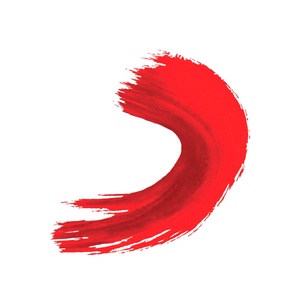
Song  Ravi Shankar
Ravi Shankar
An Introduction To Indian Music

0
Play
Download
Lyrics
Uploaded by86_15635588878_1671185229650
Indian classical music today is more alive than ever before in India and its root is traced back to thousands of years. Though books were written from time to time on the science of music, they were not written down in notations. Music was handed down through ages from master to disciple and thus was enriched by new contributions, though the basic spirit remained the same. It is only in recent years that a notation system has been evolved to write down the fixed compositions in our music, but the improvisation is the highlight in Indian music. The sheer joy of creating on the spot by a musician, always coming back to the main theme in the raga he has chosen, is what listeners look forward to. The excitement grows to its height when the drums join in and the rapport is continuous between the musician and the listeners. And thus, both musicians and the listeners share the ecstasy of this thrilling adventure and unfolding of new beauties. Drums are of precise melody forms, a raga is not a mere scale, nor is it a mode. Each raga has its own ascending and descending movement, and those subtle touches and usage of microtones and stresses on particular notes, like this. With the tambura, the drone instrument in the background, the soloist does a free improvisation known as alap, after which he starts the theme based on a rhythmic framework known as tala. He can choose from many talas, such as teen tal, a rhythmic cycle of 16 beats, or jhaptal, having 10 beats. The tabla or the drums, which keeps this framework, just plays the thekas or beats in the beginning as you heard just now. Then starts the gradual progression of playing first smaller patterns, then longer ones. In the beginning, the accompanying tabla gives, if I may say so, a reply to the lead instrument, such as the sitar. At times, they may play together a long rhythmic pattern and return with a climax to sum, or the one, which is the most important thing, like this. Although the role of the tabla is relatively free, it is the lead instrument which directs the whole progress of the improvisation. The western listener will appreciate and enjoy our music more if he listens with an open and relaxed mind, without expecting to hear harmony, counterpoint, or other elements prominent in western music. Neither should our music be thought of as akin to jazz, despite the improvisation and exciting rhythms present in both kinds of music.
Show more
Artist

Ravi Shankar0 followers
Follow
Popular songs by Ravi Shankar

Dhun: Tala Dadra
 UNIVERSAL MUSIC GROUP
UNIVERSAL MUSIC GROUP24:47

Raga Bhupal Todi - Tala Ardha Jaital
 UNIVERSAL MUSIC GROUP
UNIVERSAL MUSIC GROUP16:50

Tabla Solo In Shikhar Tal
 UNIVERSAL MUSIC GROUP
UNIVERSAL MUSIC GROUP07:14

Spoken Introduction By Ravi Shankar (2) (Remastered)
 UNIVERSAL MUSIC GROUP
UNIVERSAL MUSIC GROUP01:02

Spoken Introduction By Ravi Shankar (1) (Remastered)
 UNIVERSAL MUSIC GROUP
UNIVERSAL MUSIC GROUP00:23

Doh Bahar
 UNIVERSAL MUSIC GROUP
UNIVERSAL MUSIC GROUP10:53

Raga Mishra Gara, Teental (16 Beats)
 UNIVERSAL MUSIC GROUP
UNIVERSAL MUSIC GROUP07:45

Punjabi Folk Song
 UNIVERSAL MUSIC GROUP
UNIVERSAL MUSIC GROUP02:25

Sur Das Bhajan Raga Desh In Dadra (3 Beats)
 UNIVERSAL MUSIC GROUP
UNIVERSAL MUSIC GROUP04:36

Dhun, Tala Kaharva (8 Beats)
 UNIVERSAL MUSIC GROUP
UNIVERSAL MUSIC GROUP04:31
Popular Albums by Ravi Shankar

Nine Decades Vol. 2 (Reminiscence of North Vista)
Ravi Shankar

Dil Zaffran
Rahat Fateh Ali Khan
, Ravi Shankar

Maja Deli Eyaar Ke
Ravi Shankar

Mamta Ke Dor
Ravi Shankar

Dekhi Ketna Rauwa Dubrail Bani Ji
Ravi Shankar

Bhola Ji Bhar Di Acharwa
Ravi Shankar

Ravi Shankar's Festival From India
Ravi Shankar

Lalki Chunariya
Ravi Shankar

Nine Decades, Vol. 5: Ghanashyam A Broken Branch
Ravi Shankar

Transmigration Macabre (Music From The Film Viola)
Ravi Shankar

Uploaded bySONY MUSIC
